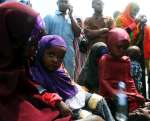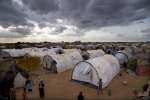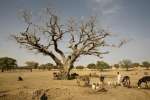Tanzania opens new camps for Burundian refugees to ease conditions in Nyarugusu Camp
Press Releases, 7 October 2015
Today, UNHCR started the relocation of 50,000 Burundian refugees to two camps in North West Tanzania, which the government has reopened to ease the suffering of tens of thousands of people in the crowded Nyarugusu camp.
Following lengthy negotiations, including a meeting between High Commissioner Guterres and Tanzania's President Kikwete in Geneva this summer, UNHCR received permission from the government to use three former refugee camps – Nduta, Mtendeli and Karago – to help decongest Nyarugusu. Nyarugusu currently accommodates more than 160,000 Burundian and Congolese refugees, and is one of the largest and most overcrowded refugee camps in the world.
Under the relocation plan UNHCR prepared with its UN and NGO partners, some 50,000 Burundian refugees will be moved this year from Nyarugusu to Nduta and Mtendeli camps. Despite current challenges to prepare the third camp, Karago, in particular because of a lack of water, that camp is expected to open next year, further easing the pressure on Nyarugusu.
Nduta has good water sources while Mtendeli has sufficient water to receive 15,000 refugees with immediate effect. A reception centre has already been built in Nduta camp in addition to four reception villages with the capacity to accommodate up to 5,000 refugees. Furthermore, UNHCR is renovating police posts in both camps and has identified a building to be used as an office for staff. Demarcation of reception villages in Mtendeli has been completed and construction of shelters and other infrastructure is underway.
Our camp planning and logistics experts have developed a detailed relocation plan, including the transportation of the Burundian refugees by road. Under the first phase, UNHCR will prioritize new arrivals and the most vulnerable refugees, including those living in flood-prone areas of Nyarugusu as well as refugee incentive workers before onset of the rainy season. New arrivals will be transported daily to the new camps with others three times a week in convoys of 1,000 people each. Convoys will be accompanied by at least one ambulance, two vehicles for refugees with specific needs and two police escorts.
Meanwhile, urgent work is required at Nyarugusu. Strong winds have damaged several mass shelters exacerbating the already dire living conditions. Refugees also need to be relocated to higher ground from some areas which are flood prone. The recent spike of arrivals from Burundi into Tanzania has seen Nyarugusu camp grow exponentially, adding more than 100,000 Burundian refugees to the existing camp population of some 60,000 refugees from the Democratic Republic of Congo.
Contact: Stephen Mhando + 255 784 730 424, mhando@unhcr.org

















































